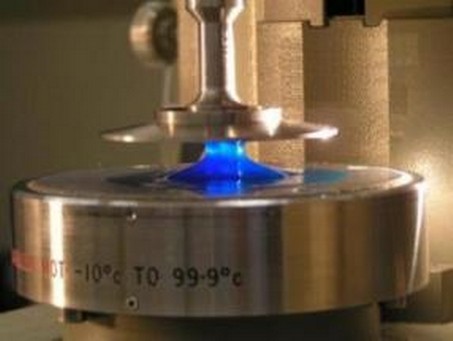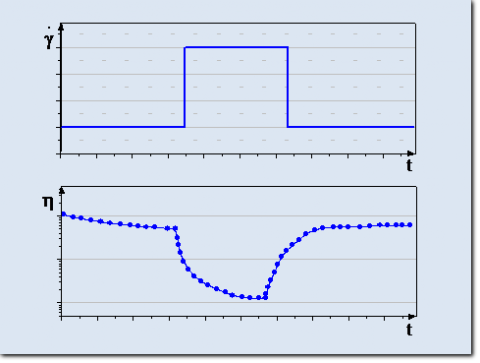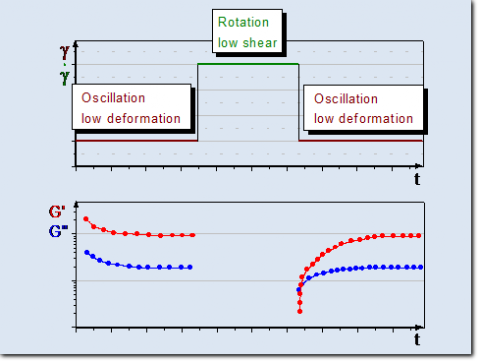Thixotropy

Change of the viscosity with time
Thixotropy is the name for the phenomenon that the viscosity of a sample under shear is reduced as a function of time. Thixotropy is also the increase of the viscosity as a function of time when the sample is not sheared anymore. Unlike to the term "shear-thinning" thixotropy is the change of viscosity as a function of time and not with changing shear rate.
The majority of thixotropic samples exhibit also a "shear-thinning"behaviour, but not all samples that are shear-thinning are thixotropic. Better than the term "thixotropy" are the terms "structure breakdown" (under shear) and "structure recovery" (at rest or low shear).
For the determination of the thixotropy a 3-interval-time-test (3ITT) is recommended. This measurement is separated into three different sections in order to examine the time dependent structure breakdown and recovery. The first section simulates the quiescent state before a sample is processed; therefore a low shear rate is applied. The second section simulates the shear during the application; a high shear rate is applied. The last section describes the recovery after the application. In most practical questions this last section is of most importance.

Thixotropy
Top: applied shear rate as setp function.
Bottom: viscosity of the sample.
Another test for samples that exhibit thixotropy is a special flow rate with three sections: upwards ramp, holding, downwards ramp. Thixotropic samples show a characteristic hysteresis, the downwards ramp lies below the upwards ramp. The area between the two curves is a measure for the thixotropy. The thus obtained value represents mainly the structure break up because there is no undisturbed recovery at this kind of measurement. Therefore it is not possible to determine the practically more important structure recovery.
There are also samples that show the opposite behaviour to thixotropic samples: In these relatively rare cases the viscosity increases under shear and reduces at rest. This flow behaviour is called "rheopex".
Structure breakup/ - recovery (3ITT) as oscillatory tests
The test for the structure break up and recovery can be advantageously combined with oscillatory tests. A short introduction about the used terms for oscillatory tests can be found at "amplitude sweep". The resting phase, section 1, is simulated as oscillatory test with small deformation. The deformation amplitude should be located inside the linear viscoelastic region (LVE) in order not to disturb the structure of the sample. In the second section (load) a rotation with high shear is applied. In the last section (structure recovery) again an oscillation is performed with the same frequency and amplitude as in section 1. Unlike to the thixotropy test in rotation (rot-rot-rot), the oscillatory test (osc-rot-osc) gives also information about the recovery of the elasticity as indicated by the change of G'.

Measurement of the thixotropy my means of oscillatory tests.
